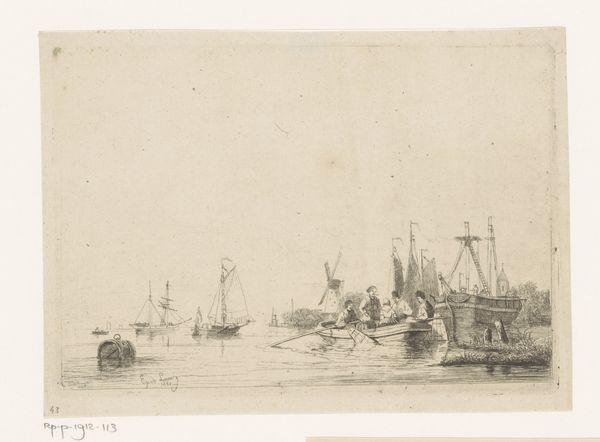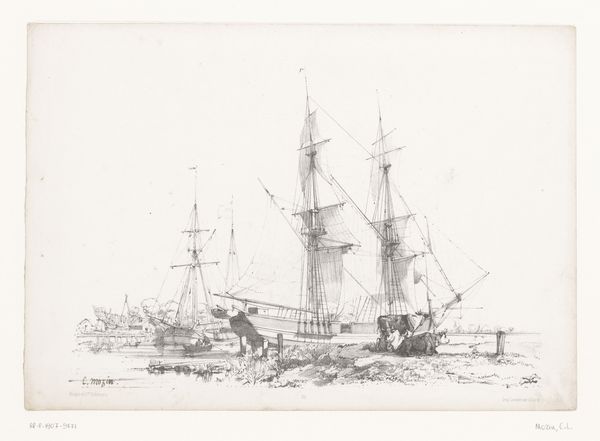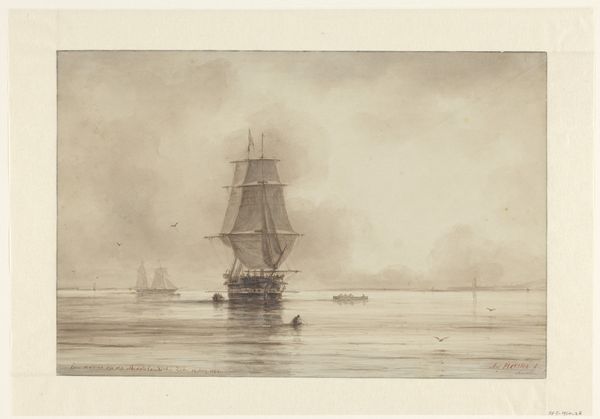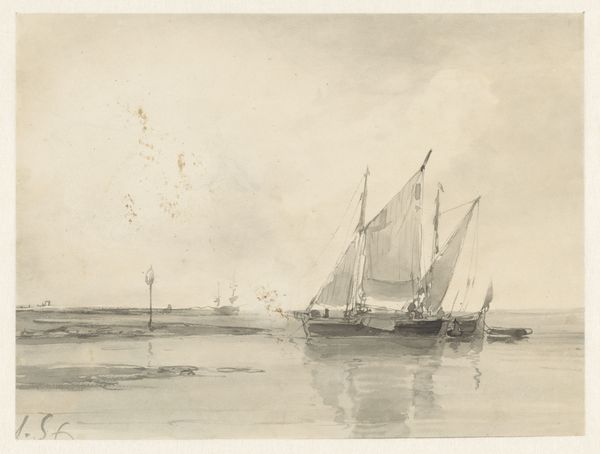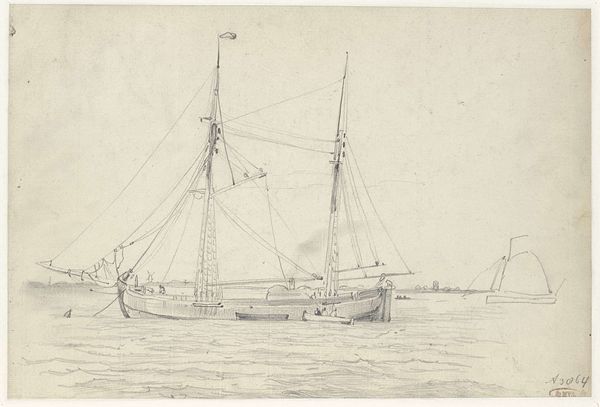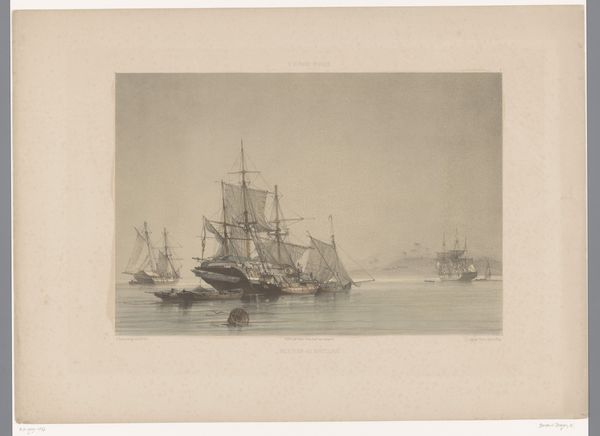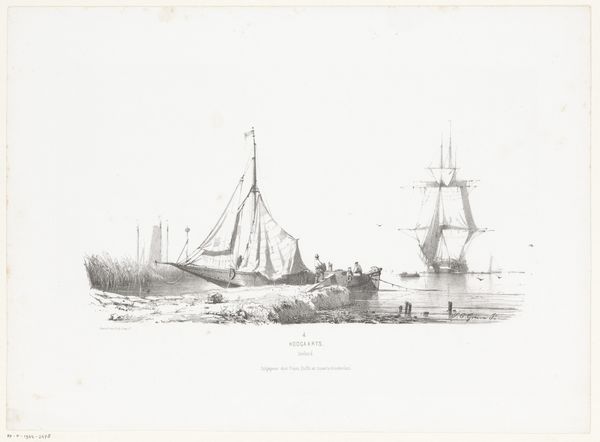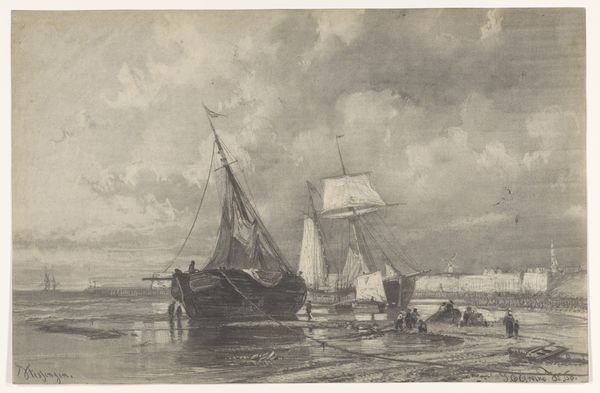
drawing, print, etching, ink
#
drawing
# print
#
etching
#
landscape
#
etching
#
ink
#
genre-painting
#
realism
Dimensions: height 275 mm, width 370 mm
Copyright: Rijks Museum: Open Domain
Editor: This is Johan Conrad Greive’s “Tjalk,” made around 1860, using etching and ink. It's a lovely little drawing; the stillness of the water and the way the ship is rendered make it feel almost dreamlike. What draws your eye to this print? Curator: The stillness you mention is key. It speaks to the symbolic power of water in Dutch art – often representing not just livelihood, but also the subconscious, the depths of cultural memory. Notice how the tjalk, a traditional Dutch sailing vessel, sits almost heavy in the water, its image deeply ingrained in the national psyche. Editor: So the tjalk isn't just a boat? It's more of a symbol? Curator: Precisely. Think of the maritime paintings of the Golden Age; ships represent prosperity, exploration, but also vulnerability against the vastness of nature. Greive, even in this smaller, later work, taps into that deep well of symbolism. The ship becomes a vessel for collective experience. Consider too, how the etching technique itself, with its delicate lines, mirrors the fragility of human endeavor against the relentless sea. Editor: It makes me wonder if this relates to a Dutch identity. I can imagine how deeply connected they are with maritime themes. Curator: Absolutely. The imagery connects them to their history, their trade, their relationship to the sea, and the continuous effort required to maintain their land. Does that cultural memory of national identity also resonate when considering what Tjalk represents to you? Editor: That's a powerful perspective. Now when I look at this piece, I don't just see a boat, but something more profound about a people's history and their connection to their environment. Curator: And that connection, that interplay of identity and environment, is what continues to give these images their lasting impact.
Comments
No comments
Be the first to comment and join the conversation on the ultimate creative platform.


